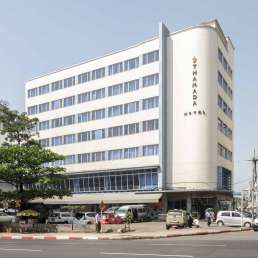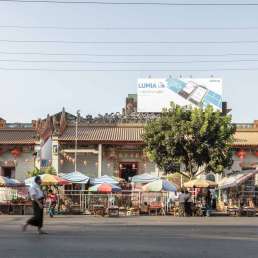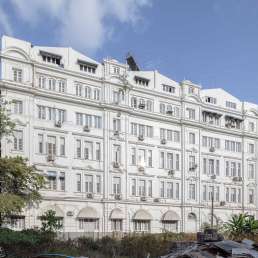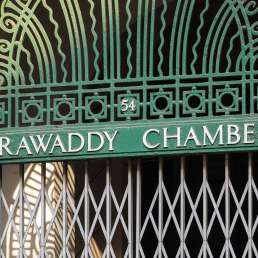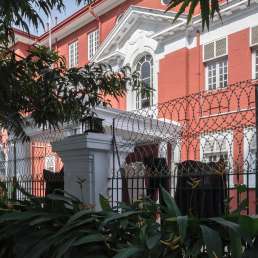Formerly: Rander House
Address: 55–61 Pansodan Street
Year built: 1932
Architect: Unknown
With its Art Deco touches, Rander House is clearly from a later architectural era than Sofaer’s Building across the road. It also feels more compact due to its height (five storeys), massing and more regular window grid. Remnants of a large portico are visible between the ground floor and the second floor, which was demolished after 1988 when SLORC decided to widen Pansodan Street. In fact, this happened to all buildings with porticos along this stretch of the road. SLORC also cut down a row of tall trees that used to line this street. (For more details on the changes post-1988, click here.)
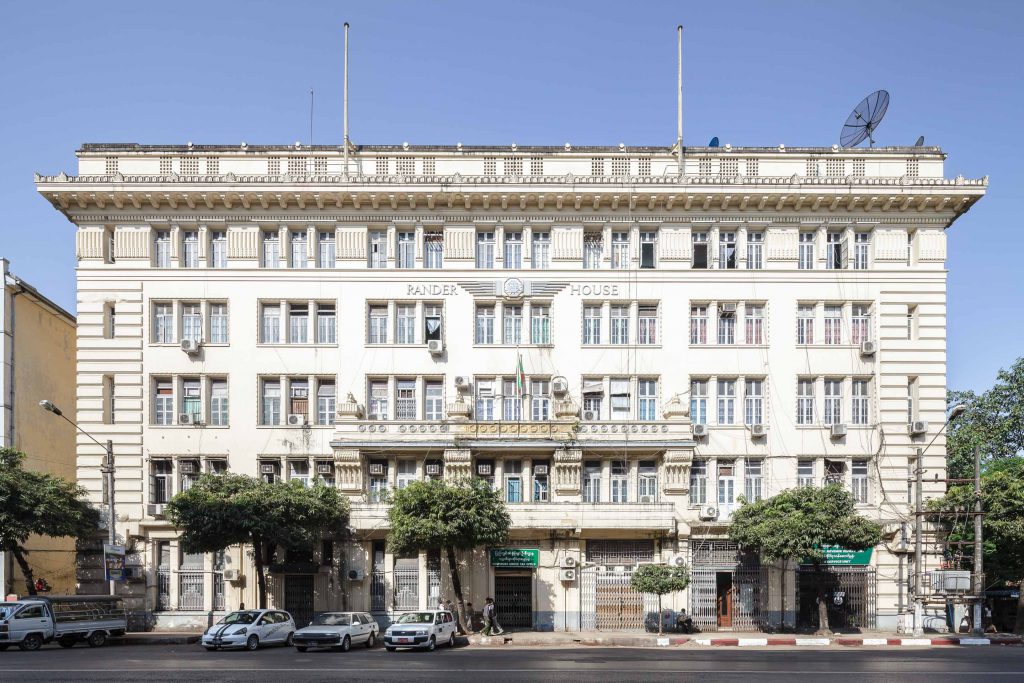
Rander House was commissioned by traders who migrated to Burma from Rander, a city close to Surat in the Indian state of Gujarat. As Indian Muslims flocked to Rangoon in the late 19th and early 20th centuries, they coalesced into associations according to their towns of origin. One of these, for example, was the Rander Sunni Bohras Soorti Mohamedan Association. The Soorti-Rander community also maintained a Randeria High School on Mogul Street, which admitted non-Muslims as well. The Surti Sunni Jamah Mosque was this group’s main house of worship.
It is believed that by the 1930s, the owners of Rander House took over the adjacent Sofaer’s Building. (Sofaer’s is sometimes referred to as Randeria House.) Rander House itself became home to the Pakistani Embassy in Rangoon after India’s partition and Burmese independence.
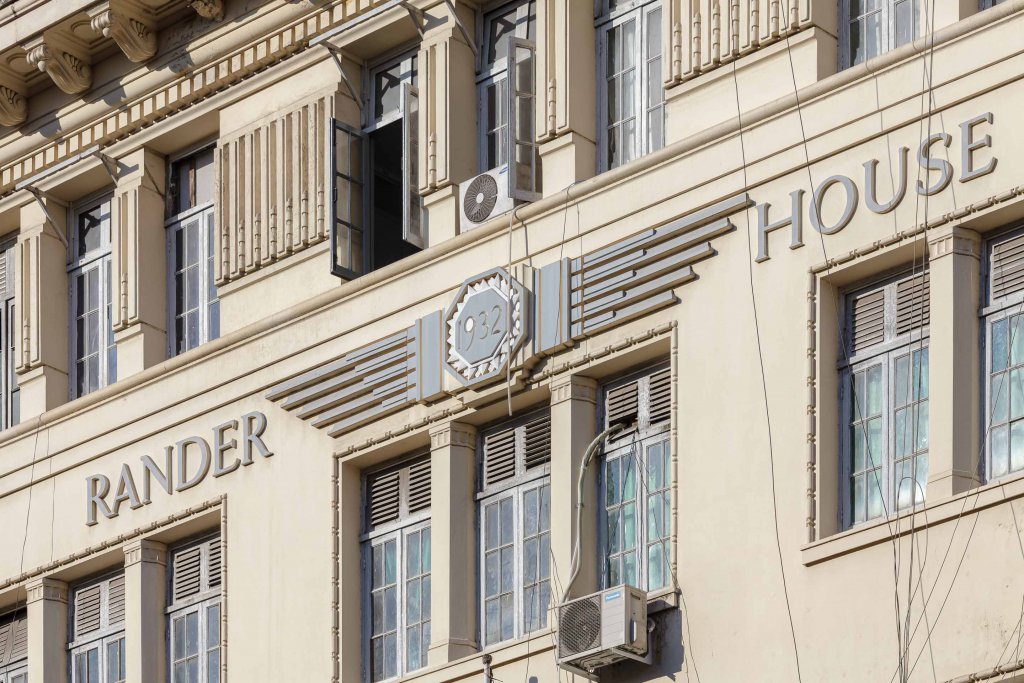
This building also housed the Rangoon branch of Dawson’s Bank. Economist Sean Turnell explained to the authors of this book that Dawson’s was “an extraordinarily successful agricultural bank whose methodologies preceded many of those employed by microfinance today”. There were plans to return Dawson’s Bank to its glory days after the Second World War; however, the U Nu regime’s Land Nationalisation Act of 1954 put the model out of business. The bank shrunk to become a “high-end pawn-broking business,” in Turnell’s words. It closed down after the 1962 coup.
The British Council had their Yangon office in the building from 1947 until it withdrew from the country in 1966. (It returned in 1978 as the “Cultural Section of the British Embassy”.) Later, the Internal Revenue Department took over the lower floors. Some of the top floors became apartments for senior departmental staff.
